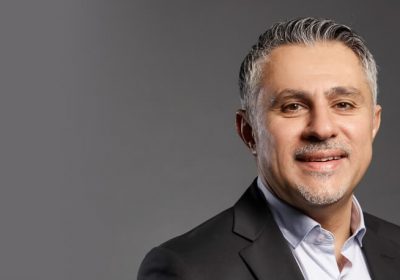
- Author: Emma Foster
- Posted: January 30, 2024
The People / Finance Vector > Unlocking High-Performance
Like many other tech sector CFOs in the throes of leading their business beyond heavy cash burn towards profitable growth, ELMO Software’s James Haslam keeps a keen eye out for sustainable cost controls. In doing so, he’s lifted the lid on a common, but largely overlooked issue: the ‘performance pay gap’.
Since James Haslam began working with Australian cloud-based human capital management provider ELMO Software in 2017, it’s been a whirlwind ride for the finance and operations leader.
He was first brought in as a finance consultant to assist the company with its listing on the ASX – one of the biggest tech IPOs that year – after 15 years of private ownership by its co-founders Danny Lessem and Manuel Garber. The $25 million raised through the IPO to support its growth kept Haslam busy, including work on the acquisition of some smaller HR management businesses to build scale.
In 2019 Haslam was appointed CFO, continuing to help grow the business, including expansion in the UK in 2020 through more acquisitions, notably adding to its portfolio the fast-growing, scalable HR platform for small businesses, Breathe.
ELMO’s revenue surged during the big pandemic-led shift to working from home, as companies rushed to install technology to help manage geographically dispersed workforces. Budding brand recognition of the service has seen its client base grow to more than 16,000 across Australia, the UK and New Zealand, with end users exceeding 2 million globally.
PE takes a peek
But, despite its strong performance, in 2022 ELMO was caught up in the widespread tech sell off by investors.
“We became vastly undervalued, and that made us ripe for a takeover,” says Haslam, who recently had the role of chief operating officer added to his remit. “To be able to unlock the next phase of growth for ELMO, the management team could see that a better pathway was through a change in ownership, as opposed to staying in the public market.”
After being circled by several suitors, in early 2023, ELMO was taken over by K1 Investment Management, a US-based global investment firm focusing on high-growth enterprise software companies, in a deal valued at $486 million. In the second half of 2023, ELMO hit operational cash-flow breakeven.
Although such a bumpy ride is not unusual for an aggressively growing tech business, it’s been a steep learning curve for Haslam, who pays credit to the mentorship of ELMO President Nord Samuelson throughout. He says the last six months in particular have been educational.
“We’ve moved from public markets to private equity which has a different operating rhythm,” he says. “I’ve gained a deeper appreciation of operations as the COO; I’ve partnered with the PE team to bring in new talent, and we’ve overseen a major restructure, all the while focusing on customer impact, keeping the team motivated and making sure the financials are strong.”
Lifting the productivity lid
Haslam says ELMO’s team of employees – which currently numbers more than 460 globally – has been central to recalibration of the company. He’s worked closely with the company’s HR leaders to increase the rigour around driving productivity, taking steps he believes may typically be overlooked by fast moving, small and medium sized businesses such as ELMO.
“On one hand, a fundamental part of our restructure was getting our spans and layers right,” he says. “We didn’t just take out headcount thoughtlessly; we were very methodical in targeting to make sure we had the right span of control and the layers of management to leverage efficiencies and achieve the right level of utilisation and productivity.”
On the other hand, Haslam says while analysing and assessing the gender pay gap, the team realised the response needed to be broader than gender and to recognise – and address – performance pay gaps so as to unlock profitability.
Plugging performance pay gaps
“Plugging performance pay gaps was the best way for us to recalibrate our rem structure because it has a broader span – and the flow on should also address any equity pay gaps, including performance, gender, ethnicity and age,” Haslam says.
He explains that every business is likely to have people who are paid highly that might not be performing well and, conversely, people who are paid below benchmarks yet are strong performers. But historically the remuneration review process can often be quite confrontational and, for many, pay outcomes are negotiated individually.
“That can lead to a position where you’re artificially increasing someone’s rem based on historical norms and confident negotiation, not on fundamental performance,” Haslam says.
An alternative is to put more rigour into the approach using externally sourced remuneration benchmarks, banding and performance grading, uploaded into ELMO’s remuneration tool.
“When we went through our rem process last year and used our own tool to help us map the performance data and benchmarks to build a more robust and repeatable framework, it threw up a lot of interesting analysis pockets that showed us that where people were on the scale versus benchmark.”
That meant instead of individually negotiated outcomes, each person’s remuneration was matched against benchmarks, their performance calibrated in the right quartiles, and outcomes calculated. “It worked very well,” he says. “It unlocks profitability and opportunities to improve pay equity because it allows you to take very surgical approach, making sure you’re promoting and increasing the rem of people who are performing, while highlighting outliers who are overpaid and not performing.”
People-centred challenges
Given the critical links between employees’ productivity and overall business performance, Haslam encourages businesses to elevate their HR leaders to align with the CFO in organisational structures, rather than as a subordinate as is common practice.
“We want HR leaders to have financial acumen, to understand and be able to articulate the impact of people decisions on the business, rather than the CFO just setting the budget,” he says.
“Complementing that is a deep understanding of the links between productivity and performance. That’s key to unlocking profit – making sure that people are producing, while uncovering the hidden cost inefficiencies, where there is lack of utilisation and engagement. The term introduced in the last few years for this was: ‘quiet quitters’.”
An emerging challenge will be how to measure productivity of remote workers. “Flexible working has its place, but my worry is with more people working from home rather than in the office, there is a danger – particularly those early in their career – they will miss out on the osmosis of the things you get in the office – building up relationships, intel, access to leaders, mentoring opportunities. When you work from home, you’re very task orientated which probably means you get more efficient and faster, but you’re not learning new ways to get better professionally.
“We are working out the balance here combining a strong rem framework, a robust performance management and leadership approach, and a well instrumented business using OKRs. We have come a long way but still have opportunities to improve.”
Doubling-down
Looking to the future, Haslam aims to “double down” on performance, noting that while the team is “always eying acquisitions”, organic growth is the priority.
“We’ve moved from burning over $2.5m of cash per month in 2021 to having recently crossed through the breakeven point, and I now want to take that to the next level, by embedding an operating cadence that will drive financial performance and help the company continue to grow profitably,” he says.
James will be speaking at the upcoming CFO Magazine Sydney CFO Symposium alongside, Chief People Experience Officer, Kate Wilkinson > For CFOs & Snr Finance leaders wishing to register, visit: www.NSWCFOSymposium.com








